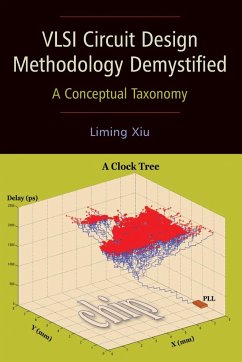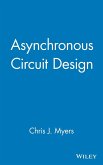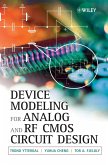An accessible, intuitive resource to common-and not-so-common-questions and answers about very large-scale integrated (VLSI) circuit design
The widespread acceptance of sophisticated electronic devices and the growing challenges of a more technically oriented future have created an unprecedented demand for very large-scale integrated (VLSI) circuits. Meeting this crucial need requires advances in material science and processing equipment along with the ability to use the computer more effectively to aid in the design process. More importantly, it also requires a significant number of qualified professionals to work in this exciting field. Unfortunately, due to its complexity and dynamic nature, the topic of VLSI circuit design methodology is not widely taught in universities nor is it well understood by many engineers. Now, VLSI Circuit Design Methodology Demystified takes the guesswork out of this important topic by presenting readers with a succinct and accessible treatment of how a complex chip is developed, from concept to silicon.
Uniquely organized in a question-and-answer format, the book builds on information in the order of chip development: market research/product definition, system design, logic design, logic verification, logic synthesis, Place & Route, and physical verification. A wealth of important questions are addressed, including:
_
What are the requirements of a successful chip design?
_
What are the major approaches of today's VLSI circuit design practices?
_
What are the major process steps in building MOSFET transistors?
_
What is the role of functional verification in the IC design process?
_
What are the two major aspects of ASIC design flow?
_
What is Hardware Description Language (HDL)?
_
What is the most commonly used model in VLSI circuit testing?
_
What are the qualities of a good IC implementation designer?
The answers to these questions and many more provide the framework for understanding the key concepts involved in the VLSI chip development process, giving readers a solid foundation for further advancement in the field. Written by an industry expert, the book uses up-to-date, real-world design examples to demonstrate to readers how to become better engineers through a practical approach of diagnosing and attacking problems. Ideal as a resource for electrical engineers specializing in integrated circuit design in the semiconductor industry, this book is also suitable as a supplementary text for students enrolled in advanced VLSI courses.
The widespread acceptance of sophisticated electronic devices and the growing challenges of a more technically oriented future have created an unprecedented demand for very large-scale integrated (VLSI) circuits. Meeting this crucial need requires advances in material science and processing equipment along with the ability to use the computer more effectively to aid in the design process. More importantly, it also requires a significant number of qualified professionals to work in this exciting field. Unfortunately, due to its complexity and dynamic nature, the topic of VLSI circuit design methodology is not widely taught in universities nor is it well understood by many engineers. Now, VLSI Circuit Design Methodology Demystified takes the guesswork out of this important topic by presenting readers with a succinct and accessible treatment of how a complex chip is developed, from concept to silicon.
Uniquely organized in a question-and-answer format, the book builds on information in the order of chip development: market research/product definition, system design, logic design, logic verification, logic synthesis, Place & Route, and physical verification. A wealth of important questions are addressed, including:
_
What are the requirements of a successful chip design?
_
What are the major approaches of today's VLSI circuit design practices?
_
What are the major process steps in building MOSFET transistors?
_
What is the role of functional verification in the IC design process?
_
What are the two major aspects of ASIC design flow?
_
What is Hardware Description Language (HDL)?
_
What is the most commonly used model in VLSI circuit testing?
_
What are the qualities of a good IC implementation designer?
The answers to these questions and many more provide the framework for understanding the key concepts involved in the VLSI chip development process, giving readers a solid foundation for further advancement in the field. Written by an industry expert, the book uses up-to-date, real-world design examples to demonstrate to readers how to become better engineers through a practical approach of diagnosing and attacking problems. Ideal as a resource for electrical engineers specializing in integrated circuit design in the semiconductor industry, this book is also suitable as a supplementary text for students enrolled in advanced VLSI courses.








